For the first time after 1964, the Novi Sad Train Station was reconstructed, and it re-shone in its original splendour. One of the symbols of our city, the work of architect Imre Farkas, now reconstructed in a modern way, boasts a high-speed line on the route Belgrade – Novi Sad, for trains that develop a speed of 200 kilometres per hour. In just half an hour, visitors from the capital of Serbia can arrive in the European Capital of Culture.
Today we are bringing you a historical story of the development of the railway in our city, the first railway and the train station in Liman, and the account on which famous families, writers, poets, and politicians travelled by train from Novi Sad, or just passed on the tracks through our city at that time. With the reconstructed Novi Sad Train Station, in the title year of the European Capital of Culture, travelling by train will reopen new possibilities towards Europe, but first, let’s go back to the past and the end of the 19th century…
First Railway 139 Years Ago
The decision to build the Budapest – Zemun railway was made at the Congress of Berlin held in 1878. The track on the line Subotica – Novi Sad – Zemun – Sava Bridge was built by the Hungarian State Railways. During the construction of the railway, a tunnel under the Petrovaradin Fortress and the Čortanovci Tunnel were dug, and two bridges were built, one in Novi Sad over the Danube and one over the Sava between Zemun and Belgrade. The Subotica – Novi Sad section was opened on Thursday, 5 March 1883, and the continuation from Novi Sad to Zemun on 10 December 1883. Although that 5 March was cold, the public response of Novi Sad residents was massive and general euphoria was present. At around 6.30 p.m. that day, three trains arrived, the first brought railway officials to their individual stations, the second consisted of three locomotives and served for rehearsals of bridges, while the third brought the director of Hungarian state railways Tolnay Lajos and the head of the construction inspection, ministerial adviser L. Nágy.
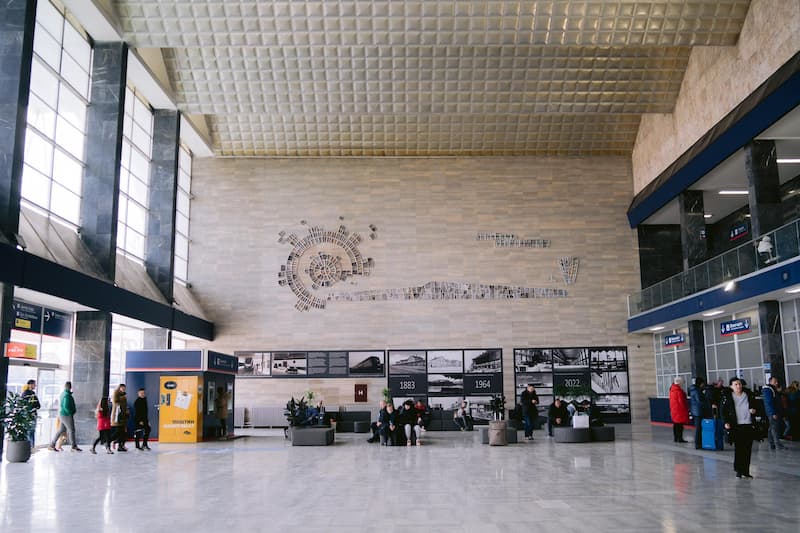
The Railway Station Used to Be near the Liman Market
The railway station building used to be located on the southern outskirts of the city, in the place where the Liman Market is today. It was connected to the city by tram, with lines that connected it with today’s Dunavska, Temerinska and Futoška streets. The building consisted of a central hall with cash registers and waiting rooms, as well as office space and restaurants. Next to the main building, there were warehouses and a building for postal traffic and customs, which is the only building that remains standing to this day and it still serves the needs of the post office.
Novi Sad Experienced an Industrial, Economic, and Cultural Revival
The reason for that is that the railway has, since its inception, improved economy and culture through creating connections and communication between people. The inhabitants of Novi Sad at that time became aware of an upcoming turning point in the economic and cultural sense. Today, when fast and mass transportation of people and goods is developed and easily accessible, it is difficult to understand the situation at that time when there were no asphalt roads, and road and air traffic was almost non-existent. Travelling by boat took a very long time and was conditioned by the weather, especially in winter due to fog. Land transport was mostly carried out by horses and carriages, on dirt roads, which would especially worsen in autumn and winter conditions when this was done over the mud. An illustrative example is given by the edition of Zastava: ‘The idyll of skinny postal horses, thirsty conductors, letters, and packages that travel for 5 days from Sombor to Novi Sad through the mud of Siva, Vrbas and Ker (today’s Zmajevo, author’s note) – has been forever buried.’
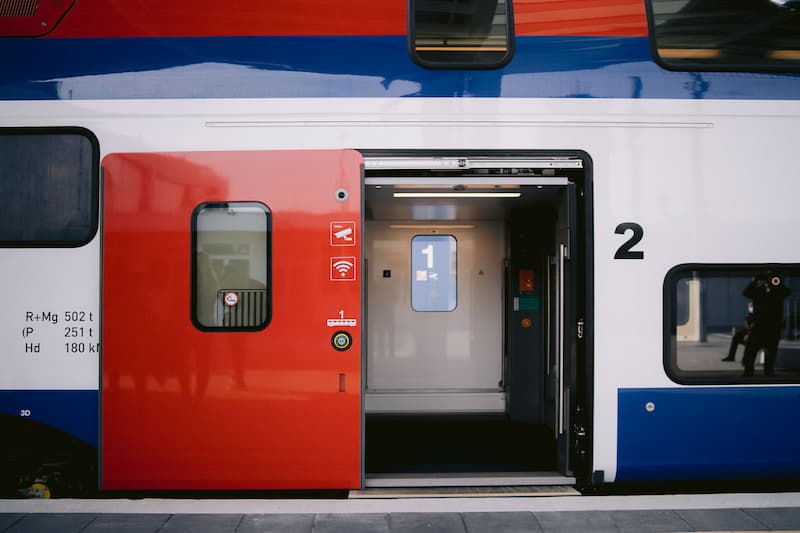
A New Window into the World
The opening of this railway had significantly facilitated the journey of Novi Sad citizens to Belgrade, Budapest, Vienna, Niš, and Istanbul. What once was several days of tedious travel in uncomfortable carriages had been replaced by faster travel in comfortable, railway carriages. Although the finances should be considered, the Budapest and Vienna Opera, as well as their schools and universities, had become more easily accessible to the citizens of Novi Sad. Our famous families and individuals (Dunđerski family, Laza Kostić, Jovan Jovanović Zmaj, Svetozar Miletić, Isidora Sekulić) became some of the train passengers. Emperors and kings passed through Novi Sad by train. Also, the famous Orient Express first travelled through Banat from Paris to Istanbul, through Kikinda, and later along the route through Budapest and Novi Sad. The regular passenger of this train was Agatha Christie, and Isidora Sekulić used to say that the Orient Express’ speed was impossibly fast. With the use of the railway, the transport possibilities became endless, there was a rapid development of passenger traffic, and a huge number of people chose train transport in order to meet their personal, economic, educational and cultural needs.
Tucidan Tragedy
Hundreds of people passed through the Novi Sad station every day, which made it lively day and night. The first morning newspapers and fresh bread could be bought at the train station. And the Novi Sad Train Station was the focal point of a famous historical event – the Tucidan Tragedy. Namely, on Tucidan, 4 January 1890, Jaša Tomić killed Miša Dimitrijević at the crowded train station.
The Station as an Obstacle to the Further Expansion of the City
In the period between the two wars, there was an expansion of traffic at the Novi Sad railway station, and its capacity was put into question. After the Second World War, due to the expansion of Novi Sad, the location of the railway station became the wider city centre and the station itself became an obstacle to further urban development. The Maršal Tito Bridge has been operating for too long as a transitional solution, the railway passed through Štosmajerova Street in the very Suburbium of Petrovaradin, where the residents could almost reach the train by hand through their windows. In Novi Sad, the railway ran along the entire length of today’s Cara Lazara Boulevard, and then along the route of today’s Boulevard of Europe towards Subotica, while one branch separated towards Sombor (via today’s Patrijarha Pavla Boulevard). The old passenger station in Liman had a passenger part and a cargo part towards the Danube, as well as a track towards the port. In addition to the fact that the railway capacities hindered the expansion of the city towards the Danube, they became insufficient for the then level of development of railway traffic. At the same time as the relocation of the entire industry to the northern part of the city, a new concept of railway routes was being created. This was made possible by the construction of a new modern bridge made of prestressed concrete according to the project of engineer Žeželj, after whom it was named.
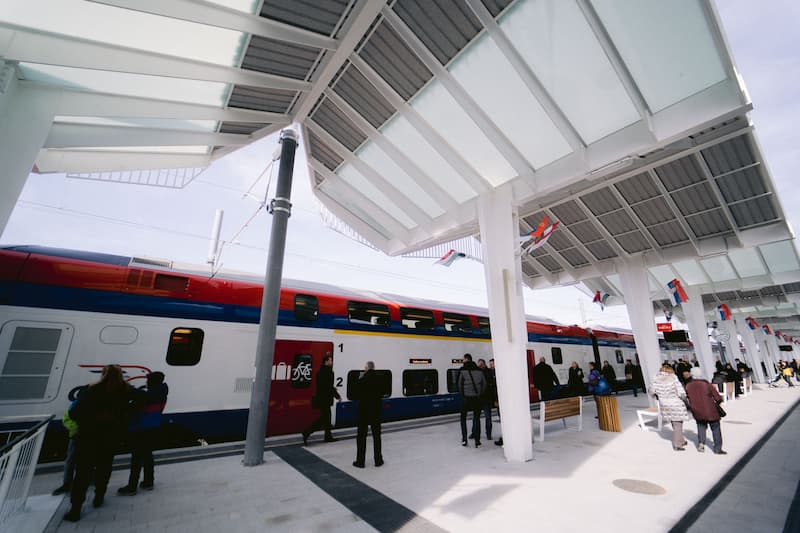
How the 81-Year-Long History of the Liman Station Came to an End
The shutdown of the old station began in May 1961. All subsequent trains went to Belgrade via the new Žeželj Bridge, and the last passenger train from the Liman Station had run on 24 May 1964. On the 120th anniversary of the Subotica – Novi Sad railway line, a memorial was erected on the site of the former station – Bas-relief – a symbol of railway and travel that once stood on the facade of the old railway station building above the exit to platform 2. It shows an athlete in a race carrying a railway wheel with wings in his palm. In that way, the place of the railway station that contributed to the development of Novi Sad was marked with dignity.
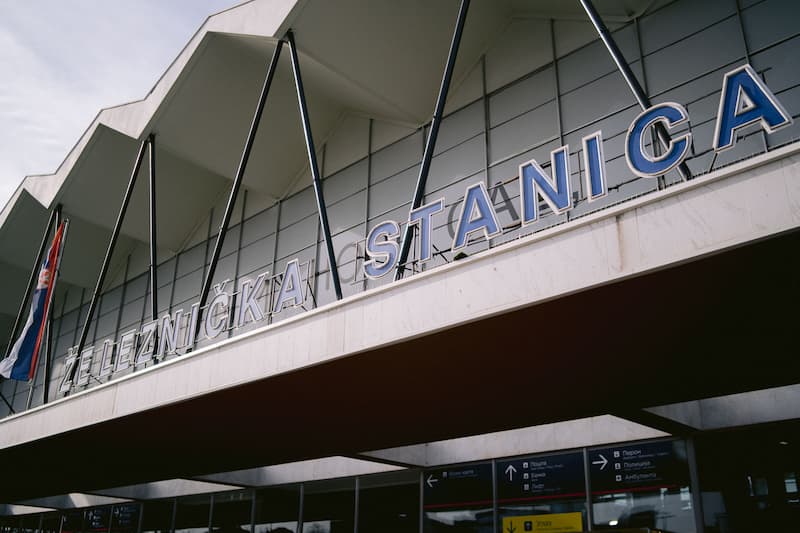
How the 81-Year-Long History of the Liman Station Came to an End
The shutdown of the old station began in May 1961. All subsequent trains went to Belgrade via the new Žeželj Bridge, and the last passenger train from the Liman Station had run on 24 May 1964. On the 120th anniversary of the Subotica – Novi Sad railway line, a memorial was erected on the site of the former station – Bas-relief – a symbol of railway and travel that once stood on the facade of the old railway station building above the exit to platform 2. It shows an athlete in a race carrying a railway wheel with wings in his palm. In that way, the place of the railway station that contributed to the development of Novi Sad was marked with dignity.
A New Station as a Masterpiece of Modern Architecture
The new building of the railway passenger station in Novi Sad was opened in May 1964. It was built according to the project of the architect Imre Farkas in the modernist style. The characteristic sawtooth roof, which symbolises the roofs of typical Pannonian houses, makes it especially recognisable. The station building itself was a logical move in the sequence within the, then new, Liberation Boulevard. With such a solution, at the time of construction, the station building was a masterpiece of modern architecture. Access to the tracks is achieved through underground passages, in order to achieve maximum passenger safety. It can be said that the ambience of the station was tailored to human needs. In the following period, hundreds of people and dozens of trains passed through this station every day, which
did not affect the station to stand out for its good organisation and adequate cleanliness. The old station building was almost completely destroyed in the period from 1968 to 1970, the only thing left of the building was the former post office where the post has remained located to this day. The new building was ruinated in the period of the 90s and 2000s, and from its former pride, it became a mockery of the city. The restaurant and waiting rooms stopped being used, while cleanliness was low. The clock on the station building has been broken for years.
Reconstruction and Opening of the Railway Station in the Title Year of the ECoC
At the present time, this station was finally reconstructed, for the first time since 1964, and it shines with its old splendour. The high-speed railway and train Soko, which currently runs on the route Novi Sad – Belgrade, arrives in just half an hour, from the capital of Serbia to the European Capital of Culture, at 200 kilometres per hour.
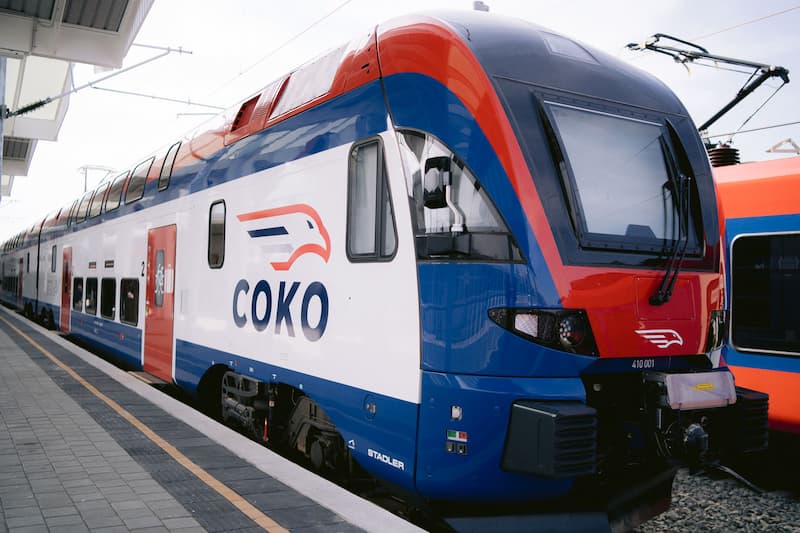
The Novi Sad – Belgrade railway is a section of the Belgrade – Budapest high-speed railway, which is scheduled to be completed in 2025.
Novi Sad Toponym and Symbol of the Railway Weighing 54 Tons
One museum treasure, weighing 54 tons, is located at the new railway station. It is a famous steam locomotive, built in Budapest in 1925, with the serial numbers JŽ 51-007. It was posted in this spot, on 15 April 1988 and has become a favourite meeting place for intentional and accidental travellers. Before it was removed from the railways of Vojvodina, this locomotive roared in the first frames of the Italian film classic Andremo in città, by Italian director Nelo Risi.
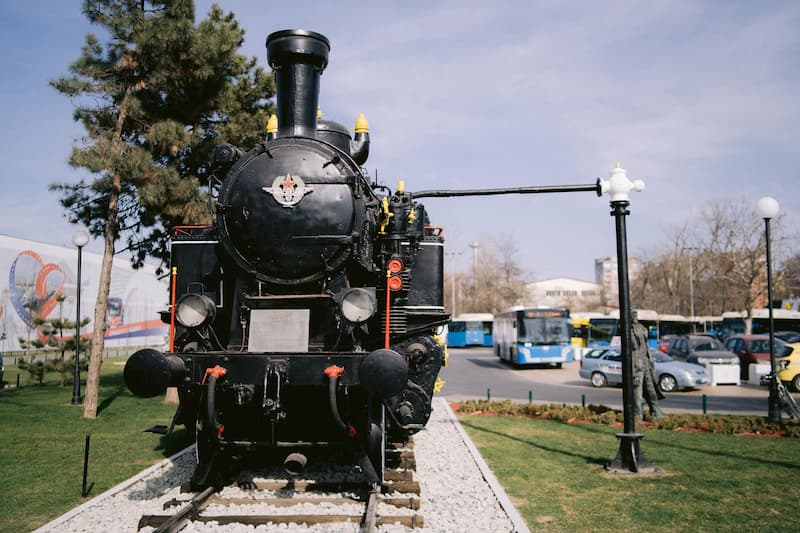
Next to it, there is a bronze statue of a railway worker in a standard uniform, which is an amateur work of a railway worker from 1989. With the reconstruction of the Novi Sad Train Station, which opened last weekend, the famous locomotive ‘came to life’, and it will let off steam every full hour and make a characteristic sound, which will attract visitors and tourists, and especially children.
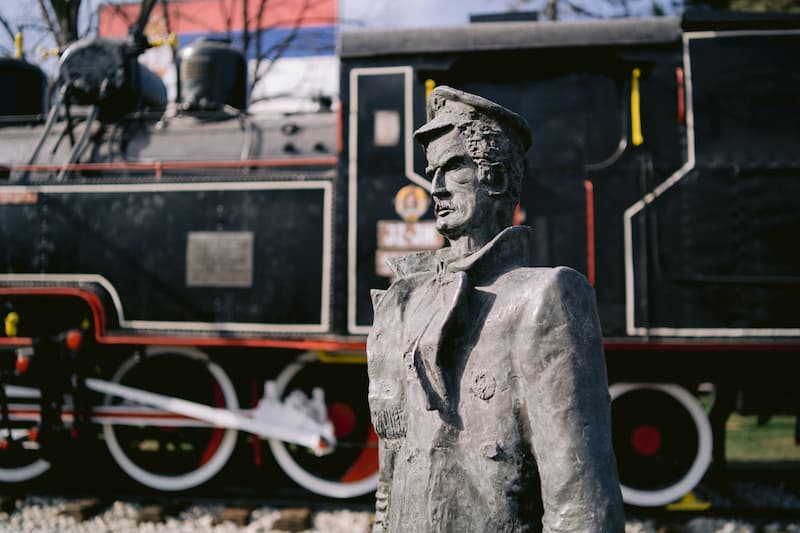
Significance of High-Speed Railway for Novi Sad
With the completion of the modernisation of the complete section of the railway track between Belgrade and Budapest with a length of 350 kilometres, it will become an integral part of the ‘One Belt One Road’ project. It represents the so-called ‘New Silk Road’, which aims to connect China with Europe, the Middle East and Africa, by modern railways that would run fast freight and passenger trains. For our country, the connection with this corridor is of immeasurable importance. The significance of this railway, in addition to establishing communication and shortening the travel time from eight to three and a half hours between Belgrade and Budapest, is that it is part of the ‘land-sea’ express line that would connect China with the Greek port of Piraeus. Certainly, with the implementation of this project, we
should not forget the very important environmental aspect. The full justification for the use of railways as a ‘green transport’ is reflected in the fulfilment of climate goals set by the European Union. Based on them, it is necessary to reduce CO2 emissions by 90% by 2050. Redirecting the transport of goods by railway would significantly contribute to environmental protection.
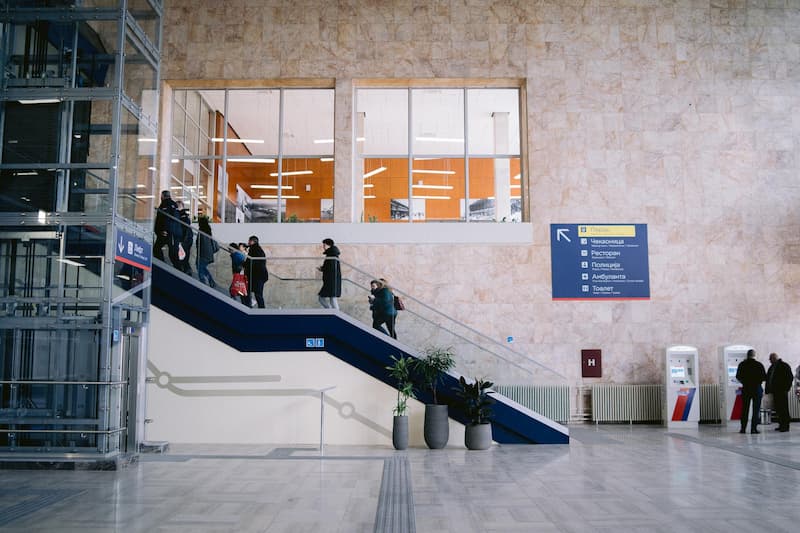
In addition to the already mentioned geopolitical and economic aspects, the Subotica – Novi Sad – Belgrade railway, as an integral part of the new Silk Railway, will certainly have a huge impact on the development and acquaintance with different cultures of the countries. The New Silk Road will connect diametrically opposed cultures of the West and the East and will enable communication between people as a basic condition for the development of culture, science, society, the spread of civilisations and the like.
Author: Historian Ljiljana Dragosavljević Savin, MSc
Photo: Vladimir Veličković







